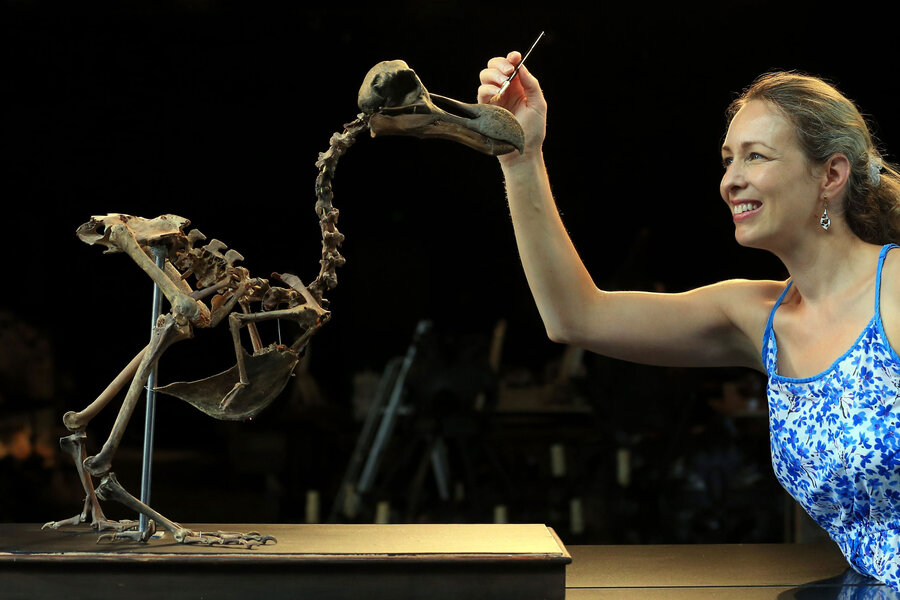Dodo devotees, here's your chance: Rare assembled skeleton up for auction
Loading...
The dodo bird may be extinct, but you can still buy one, thanks to one collector who assembled an entire dodo skeleton.
The skeleton, which comes from a private collector who bought the bones throughout the 1970s and '80s, is 95 percent complete and will be sold at the Summers Place Auctions in Britain, The Independent reports. It was about 10 years ago when the collector realized that he had nearly enough bones to complete the skeleton, which was only missing a section of the skull and one claw. Both parts have been reconstructed in anticipation of the sale.
While individual dodo bones have come up for sale throughout the last century, this is the first time a complete, or nearly complete skeleton has been up for sale since 1914.
“The rarity and completeness of this specimen cannot be over emphasized, and it provides a unique opportunity for an individual or an institution to own a specimen of this great icon of extinction,” Rupert van der Werff, the director of the auction house, told The Independent.
There is no price guide for the skeleton, but it expected to go for quite a lot.
“The majority of auction estimates are based on precedent of similar pieces being offered, which is impossible in this case, so given its rarity and desirability, we are anticipating an auction price in the region of a high six-figure sum,” Mr. van der Weff said.
Ironically, however, the long-dead dodo bird has come to symbolize humans' potential to negatively affect their environment.
The Dutch East India Company discovered the well-padded bird on the island of Mauritius in 1598, and were easily hunted for food. As more and more European ships arrived, so did dogs, cats, rats, and monkeys, all of which preyed on the birds. Within 100 years, the dodo bird was no more.
Apart from the story of its demise, the dodo is culturally remembered for its clumsiness: the 50-pound bird could neither fly nor swim.
"Even after the last dodo made its exit, the indignities didn't stop," The Christian Science Monitor's Claire Felter wrote in 2014, when scientists took 3-D scans of the only known complete dodo skeleton. "Dodo remains were, at times, treated with little regard for preservation. In 1755, the director of the Ashmolean Museum in Oxford tossed into a fire the taxidermied version of the last dodo seen in Europe. Present-day scientists have access to a miscellany of dodo bones, but they come from nearly as many dodos."
"Even though the dodo has this cultural stigma to it of being clumsy and an evolutionary failure destined for doom, I would say no," Leon Claessens, a paleontologist at the College of the Holy Cross who led the team, told the Monitor at the time. "This was an organism perfectly adapted to life on Mauritius, but nobody is going to survive having the ecosystem disrupted at tremendously heavy rates."
This report includes material from the Associated Press.








